Meet Vadim Bozhko, the visionary behind Bozh Studio — a branding and web design business dedicated to helping service-based companies stand out.Fu ...
Virtual Pioneers: A Candid Chat with Anvio VR’s Dennis Voronin
Written by: Esther Strauss
Esther is a business strategist with over 20 years of experience as an entrepreneur, executive, educator, and management advisor.
Published on October 20, 2023
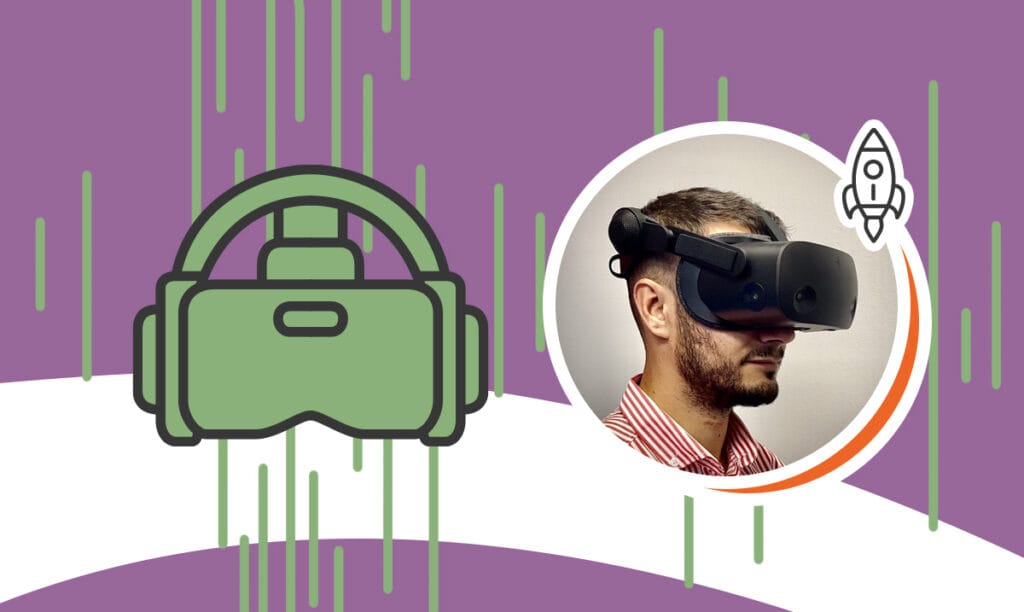
In the dynamic realm of virtual reality (VR), few names have risen as meteorically as Anvio VR. Launched in 2016 by a passionate team of developers, enthusiasts, and game designers, the startup embarked on a mission: to uncover a system that would plunge individuals into the depths of virtual reality like never before. Their relentless pursuit of excellence not only led them to create an unparalleled immersive experience but also propelled them to a dominant spot in the global VR technologies market within a few years.
At the forefront of this trailblazing journey is Dennis Voronin, the international sales manager at Anvio VR. With a vision that seamlessly melds the tangible with the virtual, Anvio VR promises to awaken emotions untouched by conventional experiences. Join us as we converse with Dennis, diving deep into the captivating evolution of Anvio VR and exploring the blurred boundaries of our reality.
Inspiration and Market Identification
SBS – What inspired you to start the Virtual Reality Club, and how did you identify the market for it?
Dennis – Anvio as a company was founded back in 2016. It was just a small group of VR enthusiasts, developers, and game designers back then. They just began to experiment with VR. They were also studying the market at the same time, but essentially, what they wanted to do was just create VR games and things like that. Then it took a turn, so they started to move away from the VR you do at home, and they created more social games, allowing you to play together and interact. You’re basically in this shared space where you’re able to communicate, interact, and do things like that. You can see each other, hear each other, and so on. This is what’s called free-roam virtual reality. You’re allowed to move freely without any cables or equipment apart from the VR headset. And you get to play with upwards of 12 players playing at the same time. This is for our biggest new release from a few weeks ago — game film format.

We have all sorts of different VR games, everything from zombie shooters to kids’ games. And we have an increasing number of locations. As of last week, we’re in 32 different locations around the world. Our recent location, the Ambient Park in Dubai, was big for us.
To answer your question, we experimented with VR, moved into social VR experiences, and experimented so much with the technology behind the game zones. There’s been a lot of progress from what we did in the beginning to what we do now, from a technology perspective and the business model. When we just started, the technology was very expensive to create these immersive VR experiences. We were using a system called OptiTrack, which essentially captures various points on your body with these sensors — very expensive. We moved away from that. Now we have a different technology.
We’ve also looked at this from the perspective of not only the end customer but from the perspective of B2B, business to business. What is it that partners want? Obviously, they’re looking into prices. Many people want to catch VR’s hype, but at the end of the day, this is a business. So, we looked at it from the perspective of creating the most amazing experiences possible. And then, we have to take into consideration various factors related to business.
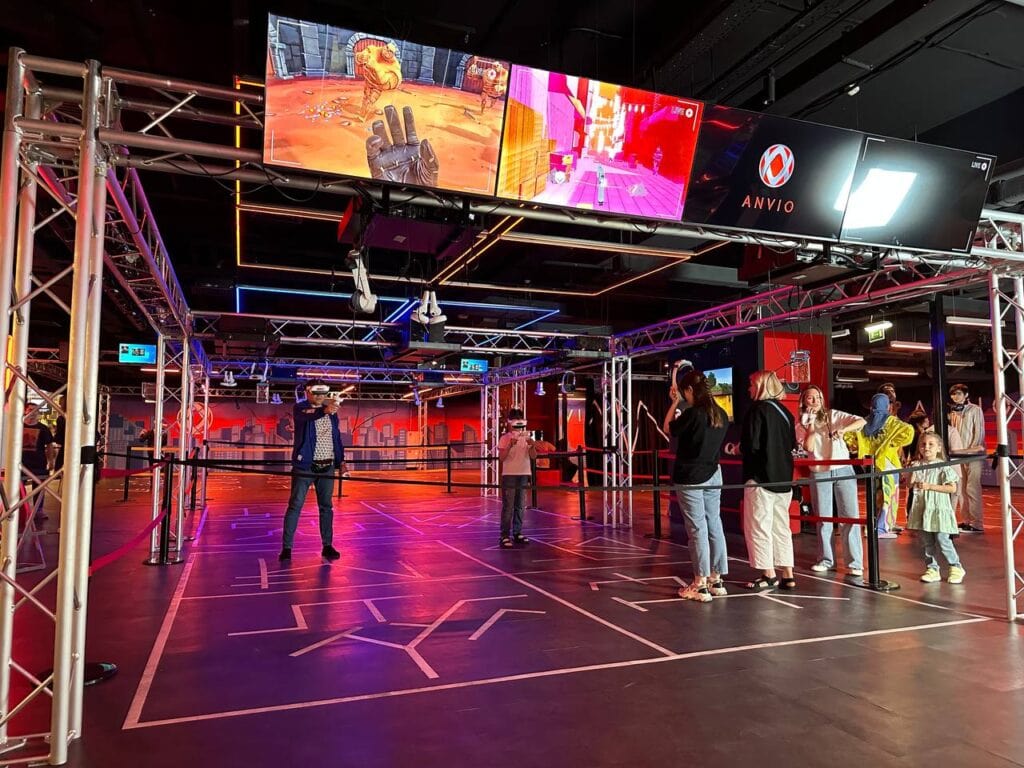
SBS – How exactly did you identify the demand for this product? Did you research the market or just start it to see how it goes, and then it exploded?
Dennis – Back when we first started in 2016, VR was just reaching the mainstream. People hadn’t heard about VR. Maybe they had seen some of the futuristic movies, like Steven Spielberg. But back then, we were also in this Wild West territory. I guess people expected VR to explode. VR is such an amazing technology. You’re transported to a completely different world and immersed in other surroundings with your friends, family, or whoever you want to play with. On our end, we knew that this was going to be a technology that people would love. We did conduct some general market studies and things like that.
It was in the early stages, but it was self-explanatory for us. We had created our first game. We tested it on our friends and family. It was called City Z. It’s a zombie shooter. We saw the reactions to those games, which was a questionnaire for ourselves, simply because we saw the reactions: people were screaming and shouting. We just found that golden moment when we decided that this is something we have to progress, and we essentially started creating more games and experiences.
Equipment and Software Selection
SBS – How did you decide on the special VR equipment and software? What factors do you consider when you are ordering the equipment? Do you make it yourself?
Dennis – At Anvio, we have experimented with the technology behind our game zones since 2016. Much research goes into developing the perfect configuration of how to create these experiences, not only when it comes to the games themselves (the software part) but also from the hardware. There are VR headsets involved. Right now, there are quite a lot of them on the market.
But, when we started getting into this, as I mentioned, we first looked at it from the user standpoint because, as they always say — the customer is always right. We were listening to them, their reactions. Then, of course, we looked at it from the perspective of the technology because back then, there weren’t that many headsets. You had the old Oculus headsets, various traditional systems, motion systems, etc.
Back then, we were quite lucky because the technology was relatively new, so we entered and invested in it early. We started looking into the headsets and the motion systems we could use. And we saw that developing a completely new headset was simply too expensive. Even new companies approaching the market right now are not going to come and say, “Hey, let’s create a new headset just for our games.” They’re going to use existing headsets that are currently available. For example, Oculus — well, Meta — just released the Quest 3, but there weren’t many to choose from back then.
Even then, we decided to go down the route of, “We have these available headsets. Let’s stick with that.” For instance, there was also what is called full body tracking. You place some sensors on your body, and you get to see the entire hand movements in the games themselves. We also looked into this technology called OptiTrack, which we had in the beginning. It’s great. These two technologies are great, but they were very expensive. You would essentially pay thousands of dollars for a camera that would capture your location from the side. That was very expensive — many thousands of dollars just for one camera.
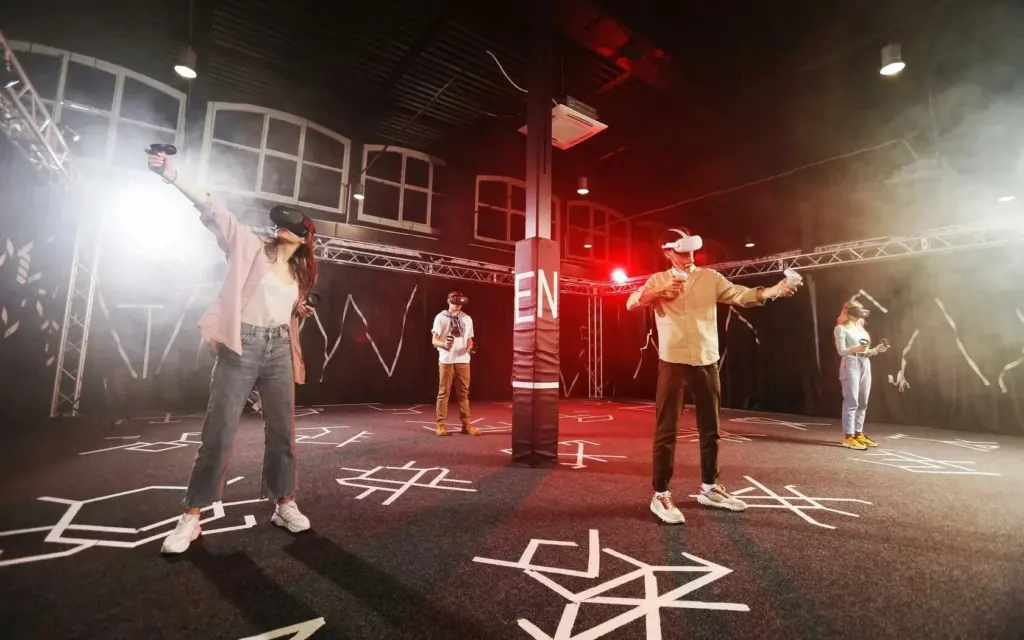
SBS – So you are sticking with Oculus?
Dennis – No, this is another technology that we used in the beginning. But, first of all, we looked at it from the perspective of the user. Obviously, we have to create amazing games and experiences, but at the end of the day, we operate B2B, right? When we look at what our partners want — our partners being VR arcades and family entertainment centers — of course, they have a budget. They’re rarely prepared to spend thousands of dollars on just one camera. So, we had to look into ways of simplifying the technology while making sure that the experience stayed the same.
So, to answer your question, what were the factors? The first one was the technology itself, making sure that the user experience stays the same, staying optimal, but also operating within this realistic framework of the budget itself to make sure that it’s accessible and that anyone can purchase it. Now, it’s very easy to set up our games. You just need a headset, a computer, and a router.
Spatial VR Club Design for Safety and Immersion
SBS – Can you describe the ideal physical layout and design of the spatial VR club (if there is one) so that you can ensure safety, immersion, and customer satisfaction?
Dennis – For example, when we receive a request to open a new Anvio location, whether it’s just to simply set up an Anvio game zone or open a franchise location, we do a lot of evaluation on our site and provide various recommendations about the factors to consider going into this. It’s a new, vibrant industry, and things are always changing. So, to answer your question, I would like to divide this into two parts. You have the commercial aspects, and you have the technical aspects.
Let’s start with the commercial aspects. In this industry, location-based entertainment, like in retail, location matters. The more central a location is, the better. When looking into foot traffic, you want to have many people coming and going. You want to have that walk-in traffic and a high level of throughput. This is why we recommend having the location in a shopping mall. You don’t only have the foot traffic available, but also the demographics — people with the money to spend on entertainment and a premium product. In the US, you spend $45, $50 per ticket just for one game, which is 30 minutes.
You also need to have a location with transport availability and logistics because you want to be close to metro and bus stations where you can go in and out and have parking available. But let’s say that, for example, you’re not in a shopping mall or centrally located. It’s not the end of the world. Many of our locations aren’t in this high-end shopping mall, like in LA, where we’re right on Hollywood Boulevard. In that case, we recommend spending more on your budget towards digital marketing. From our research, we recommend that you spend 8% to 10% on your digital marketing: advertising, having promos, discounts, and things like that.
The second part would be safety. We have recommendations when it comes to the game zone itself. What we’ve noticed in Eastern Europe is that many venues have columns. Our games are available to play with columns; it’s just a matter of making sure that the column is located central to the game area. Our games are made in such a way that we have a half-meter safety zone between the wall and the game itself. So, even if you leave the virtual space within the game itself, you still have at least half a meter where you’re not able to touch the wall. We have that as an additional safety mechanism. You’ve probably seen some videos on YouTube where people still manage to find ways to leave the safety area. That is on their side. It’s not something that is in our games.
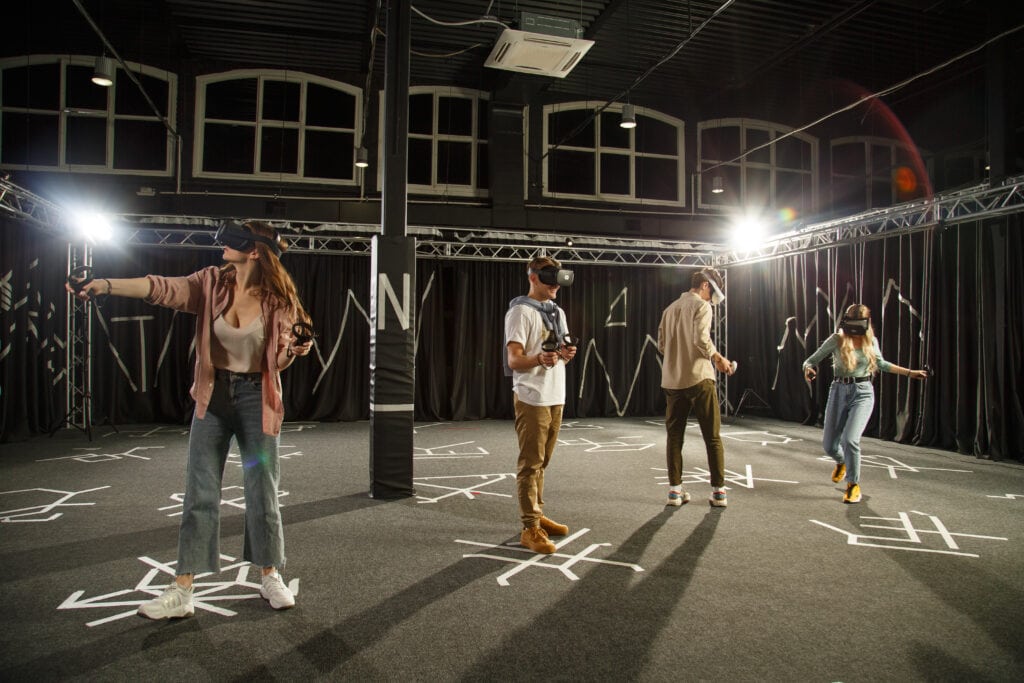
This is not related to safety but more towards the third part of your question, like the user experience. We recommend that our franchise partners have at least some lounge area. For example, in Dubai, where I was just a few weeks ago, they have these poofy bags on the side, having at least six to seven people that can fit into this lounge area where they’re able to wait for the next game and so forth. The last one is having a reception area where someone greets the guests, making sure that they have this first kind of interaction with someone because that first interaction is very important.
Tailored Experiences for B2B and B2C
SBS – Do you have something to add about the strategies you’ve implemented to introduce newcomers to VR and ensure a memorable first experience?
Dennis – I guess I spoke more about the B2B aspects. Maybe I can go more into B2C. First of all, let me just add that our games are still very accessible to newcomers, which makes us stand out from our competitors. Whether you’re just a child coming in, you have a family, or you have already had a lot of experience with VR, we already have our games targeted towards the entire range of demographics.
From a B2C perspective, we provide all our partners with the instruction guide. We give that to the operators, not the receptionists, but the people who lead the people to the games themselves. We provide them with this instruction manual, so everything is systematized.
Every Anvio experience is going to be quite similar if you’re in Dubai, France, or the US. The introduction they give is going to be quite the same. They clarify some safety instructions if something goes wrong because many people are still quite nervous when playing VR — for the first time at least — and are still on edge. In that sense, it calms them down. Even if there are some calibration issues, it’s completely normal. They know what to do and so forth.
But also, from the perspective of B2B, I wanted to add that, apart from the location itself, we try to make the games very accessible to partners that want to open an Anvio location in the sense that we provide free installation. We give them clear instructions, this roadmap of how to present a vision to a final concept.
The gameplay and the games themselves are accessible — everything from kids’ games, like Dragon VR, to the most trending reactions to our games. For example, TikTok and Instagram reactions that reach millions of views are for our zombie shooter called City Z. Basically, it’s entirely focused on location-based entertainment. We have had offers to create educational experiences in the past. It’s not something that we’ve pursued.
SBS – Why?
Dennis – Well, we just saw that in location-based entertainment, the entire industry is more lucrative. We just did our analysis, market studies, and things like that, and we decided to apply VR, as we do right now, strictly to location-based entertainment. But, we don’t only provide games but experiences, which brings me to the next point. We recently unveiled the concept of Anvio Park. It’s not just this entertainment complex. The Anvio Park itself is forward-thinking. We strive to implement all the latest technologies currently on the market, not only VR.
We’ve done some experiments with augmented reality. In some of our parks, we’ve added VR attractions. We’ve added a host of new, different technologies that we see as pertaining to the Anvio brand. It fits our brand and spearheads our journey to the next level. We’re not a company that only makes VR games, but we create solutions and use the latest technologies to make better experiences for everyone.
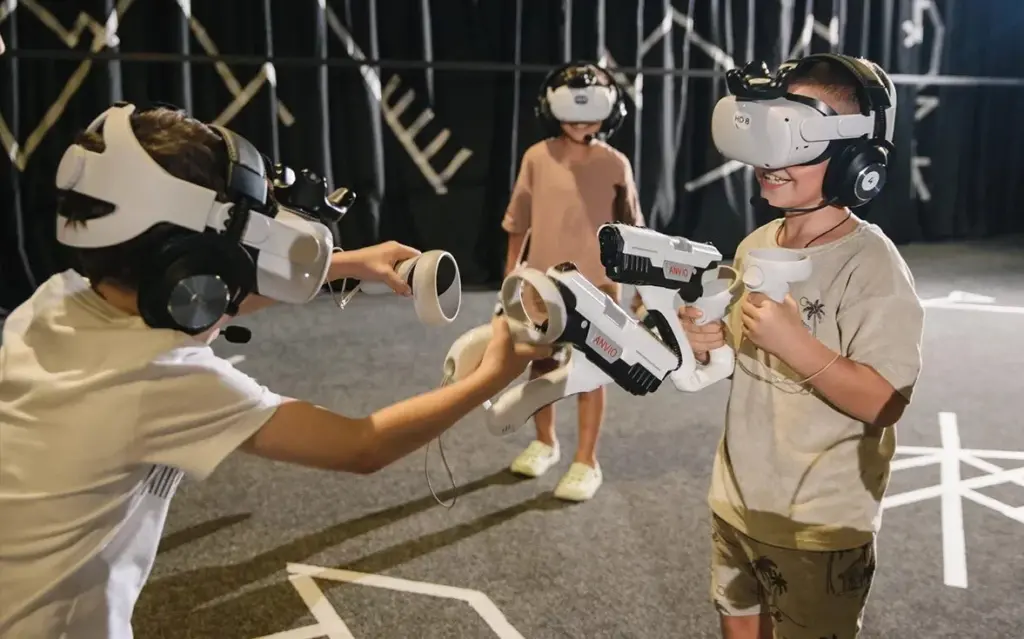
Marketing Strategies for Attracting New Users
SBS – Given the unique nature of VR, what are the marketing strategies that you use to attract new users? Do you apply different marketing strategies to try to break into the new market and complete a new country, or do you use the same models for everything?
Dennis – I love this question as well, simply because it’s very simple. The most effective marketing strategy in virtual reality, or at least in the field of location-based virtual reality, is to capture and record the player’s reactions. There’s a reason why the funniest and craziest reactions to our games reach millions of views on TikTok and Instagram — it’s because it’s a great experience. You have to record these emotions. You have to record when people scream, shout, crawl on the floor. I saw a video just last week of this girl. She was once again playing City Z, the zombie game, and she was crawling on the floor. She was going crazy. Someone just recorded that and added a simple text. That reaction reached millions of views, and there you have not only marketing for that specific location but also the entire Anvio brand.
When a video like this reaches millions of views on TikTok, we’ve noticed in our analysis that people start to search for “where to try Anvio,” “where to try Anvio VR,” “where to try VR,” directly after that hits trending.
SBS – Basically, social media is like free advertising?
Dennis – Yeah, absolutely. And this is also something that we’ve added to the operator instruction manual that we hand out to our partners. Before they start the games, we ask them to request from the players whether they want to be recorded. The operators take their phones and record them as they play.
SBS – So you get them to sign the agreement that they will be recorded?
Dennis – They don’t sign anything. They just hand the phones themselves, like, “Can you please record me?” It’s free marketing because who doesn’t want their funny reactions shared with friends? I mean, people want to show off that they’ve tried VR. It is essentially something that people want to publish on social media, right?
There are, of course, certain other things you can do in terms of marketing. For example, at the end of the session, provide various discounts. When they bring a friend, they get a discount of, let’s say, 25% on the next session, which also works. But then, as I mentioned in the beginning, digital marketing is crucial in this day and age. So, spending 8% to 10% on your budget is a reasonable figure to do. Spending that on targeted advertising, promos, and things like that is something you definitely have to leverage.
I can tell you from our location in Moscow, where, apart from digital marketing, word of mouth is so big, even in a big city like that. People have tried our games there. They tell their friends and family. And we’ve noticed that there’s a lot of word of mouth in the city itself. That is also kind of a tool that comes organically after some time.
Staying Updated with Emerging VR Trends
SBS – How do you stay updated with future trends with the rapid evolution of VR technology, AI, and everything?
Dennis – This is a very good question. The world is going through many changes in all sorts of different areas. As a company, we conduct a lot of studies and analyses when it comes to the market itself, not only technology-wise but identifying consumer trends in relation to the content. As I mentioned, we have various types of content.
Just last year, we were doing a lot of analyses about the specific content we wanted to push. And PVP, player versus player content, where you play against each other, is something that we’ve placed a focus on recently, simply because with it, you do have the degree of replayability. For example, you’ve played once, lost to your friends, and want to play again. People, by nature, are very competitive. This is why we, in recent years, have placed a focus on PVP.
Back in December, we released this new game zone format, which is essentially PVP, but it’s on a large scale, with up to 12 players playing at the same time. These two factors go hand in hand. You have the PVP content and more players playing at the same time. This, of course, provides more revenue. You’re able to fit more players in the same space, but you also have a degree of replayability. So it kills two birds with one stone, as they say.
I mentioned that we unveiled this new strategic concept of the Anvio Park. We give our partners a lot of freedom to implement new technologies by themselves. Typically, franchise companies are strict and have rigid rules and procedures that you need to follow. I believe the term is called McDonaldization. You have this strict hierarchy and bureaucracy. It has to be done this way. With the strategic concept of the Ambio Park, we took a different approach in the sense that if one of our partners in, let’s say, Oman or Dubai wants to add VR attractions or augmented reality to their park, they come to us and they say, “Hey, we believe that this is going to be good for the local market. Could we do this ?”
Of course, in 95% of cases, we provide them with the freedom to do so. It still has to fit the Anvio brand and what we do. We are a forward-thinking company in the sense that we already use VR, which is an advanced technology. If they have some other ideas, not only in terms of the technology itself but if they want to pitch an idea for a game that would fit their local market needs, for example, a theme that is more designed for the Middle East, then we’re able to consider that as well. So we’re always taking new ideas into account.
Advice and Pitfalls for Starting a VR Club
SBS – What is some advice and potential pitfalls that someone who wants to start a VR club should know of and how to overcome them?
Dennis – When it comes to VR, over the years, we’ve had a lot of requests. There are certain instances when people want to catch the hype. They may have heard about the buzzword of the metaverse, and they say, “Oh, I’m sure that VR is new. It’s going to make a lot of money.”
But, to answer your question, in this scenario, planning is essential. We just released a video on our YouTube channel where we had an interview with our partner in Dubai. This was one of the challenges for him — if he could go back in time, he would plan this whole process better. There’s also the understanding that, even if he did the planning, so many factors could still affect his journey as it goes along until he realizes the project. But at least with planning, you have a sense of direction, know where you’re going, and have deadlines to meet.
So, planning in the field of opening a VR park is essential, not only in terms of time but also in terms of budget. When it comes to operating a VR park, you have to understand the technology itself; there is wear and tear, and headsets can break down. This is something that you have to consider as well. So, to answer your question — don’t catch the hype. Catch the planning.
Subscribe to Our Newsletter
and gain insider access to cutting-edge business insights and trends.
Featured Resources
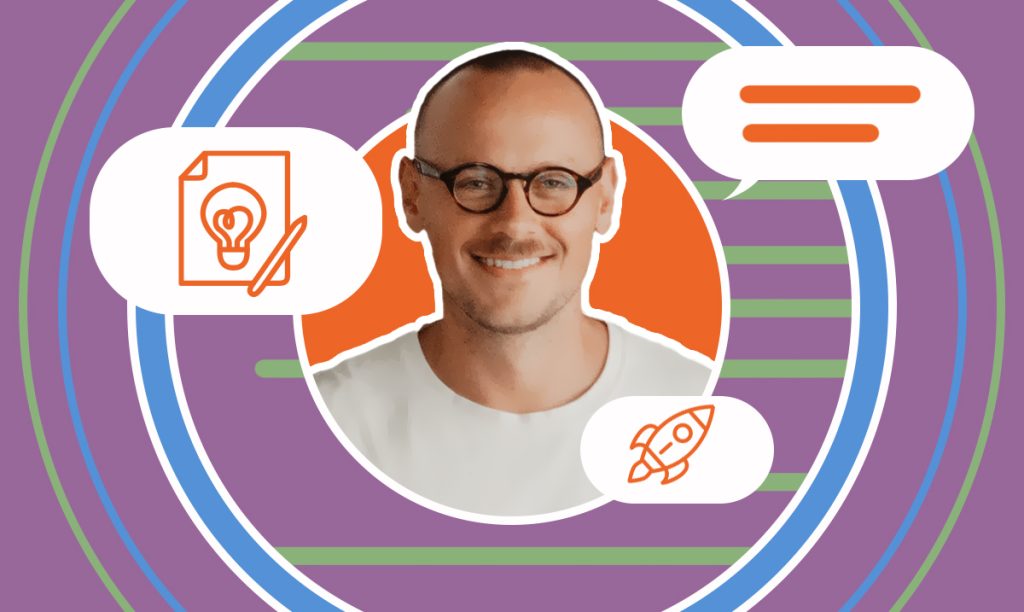
How “Less but Better” Drives Bozh Studio’s Design Edge
Published on April 3, 2025
Read Now

How No Code Map App Delivers Custom Maps Without Coding
Published on April 3, 2025
In this interview, we sit down with Nan Zhou, co-founder of No Code Map App, to discuss how she and her team transformed a trip-planning mapinterfac ...
Read Now
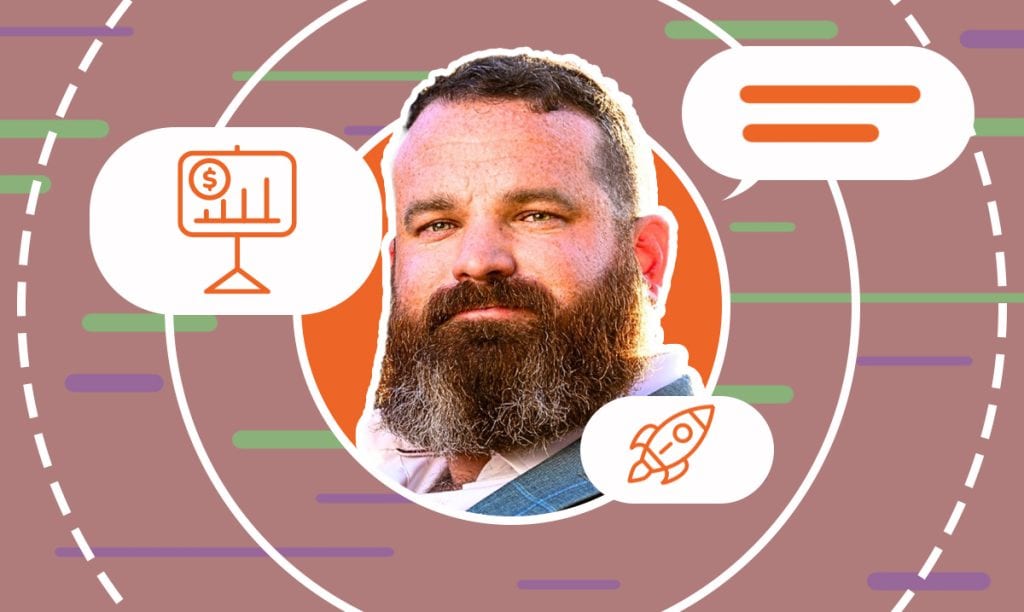
How David Pere Helps Veterans Achieve Financial Freedom
Published on April 3, 2025
In this interview, David Pere, the founder of From Military to Millionaire, shares his inspiring journey from the Marine Corps to financial freedomt ...
Read Now
Comments